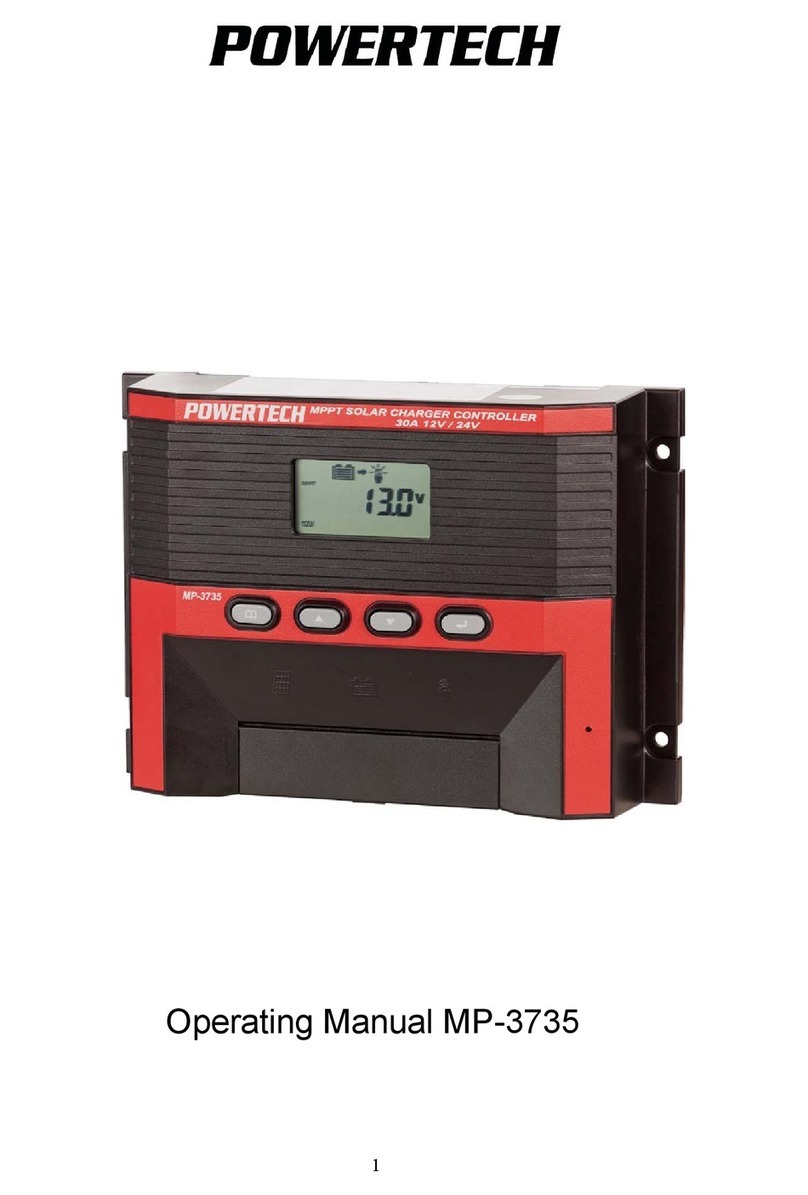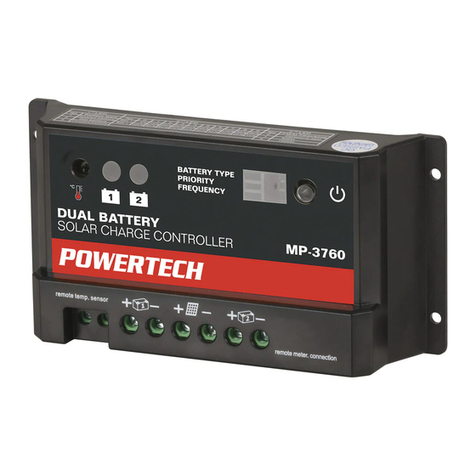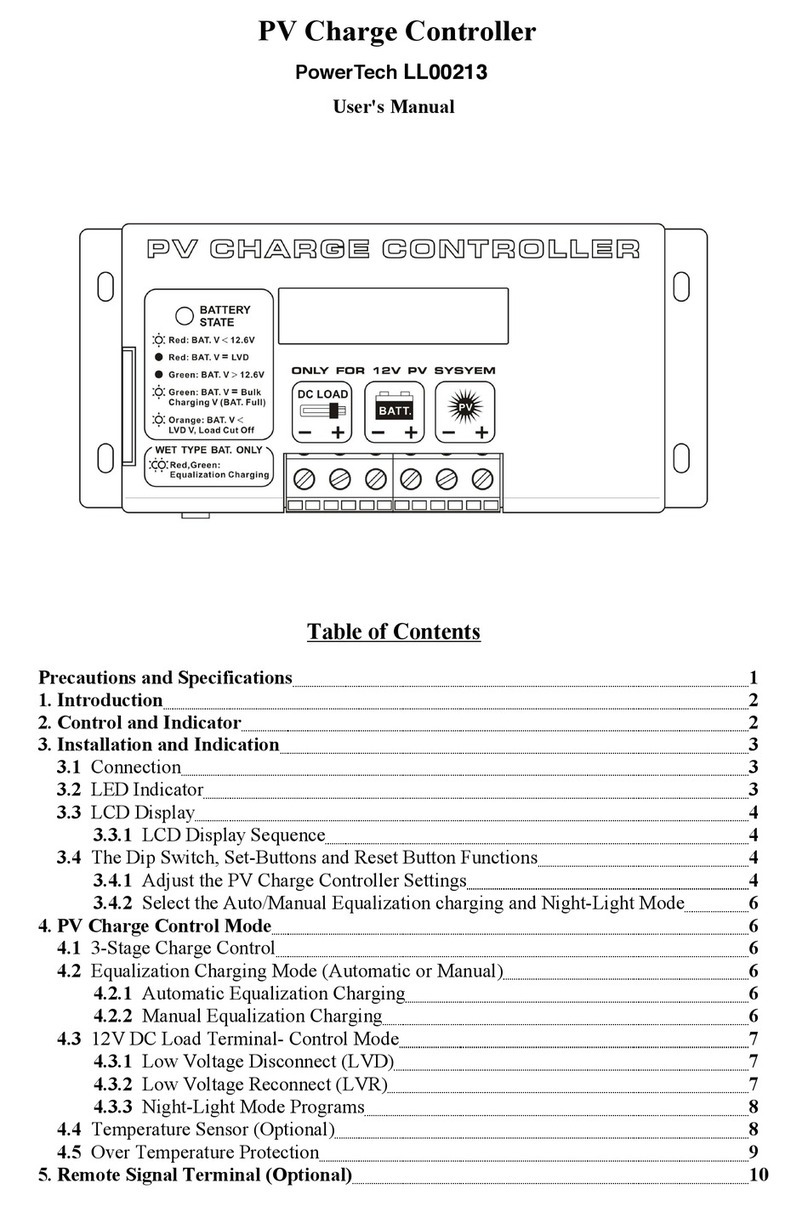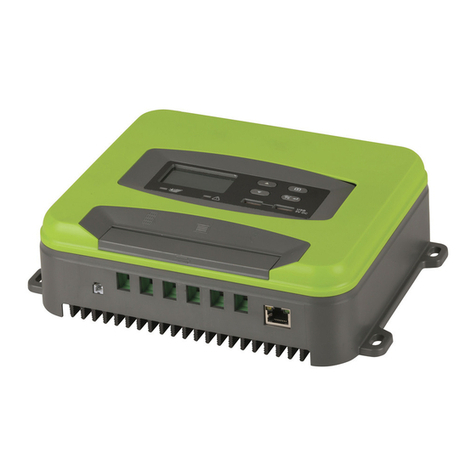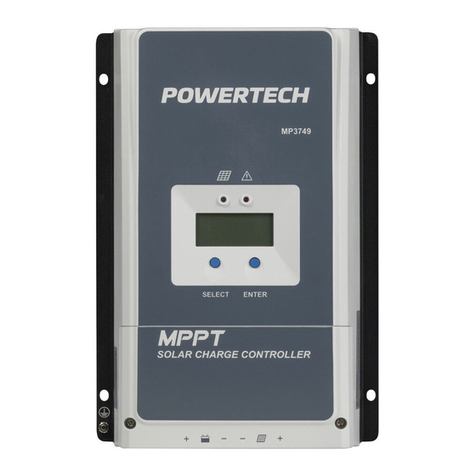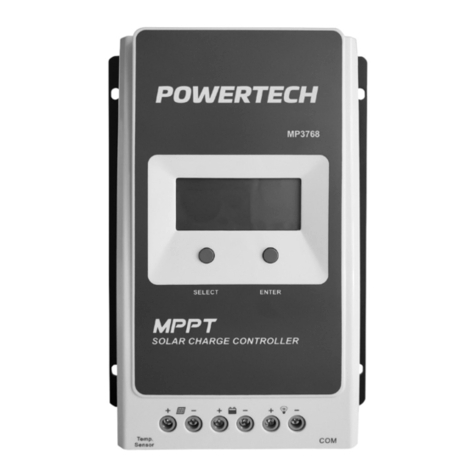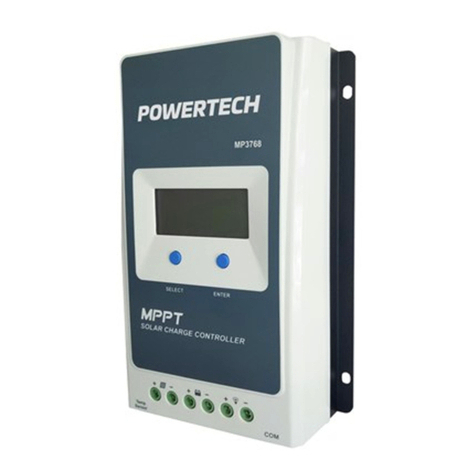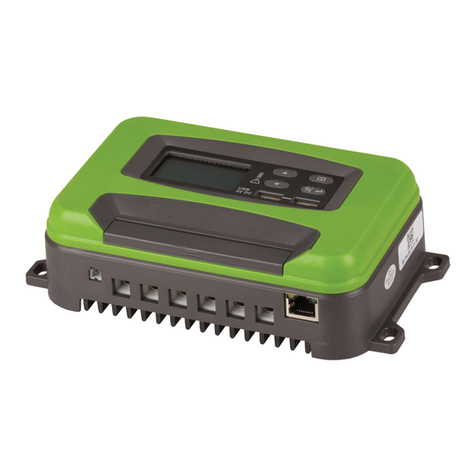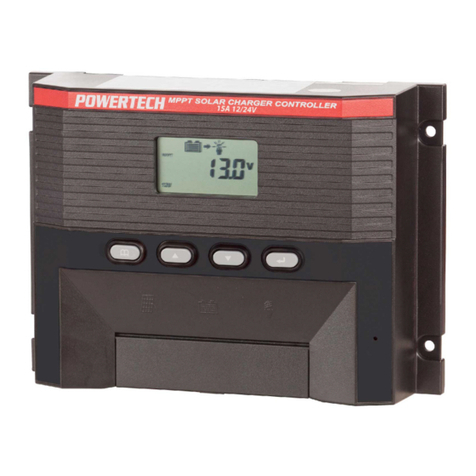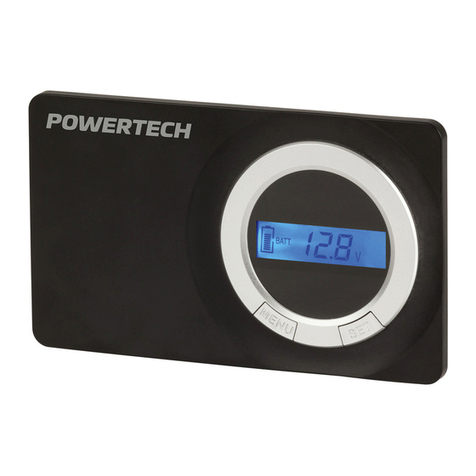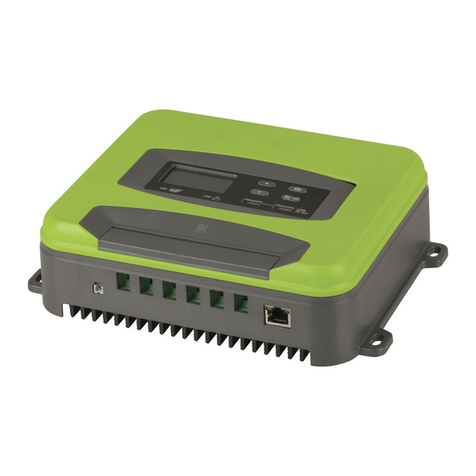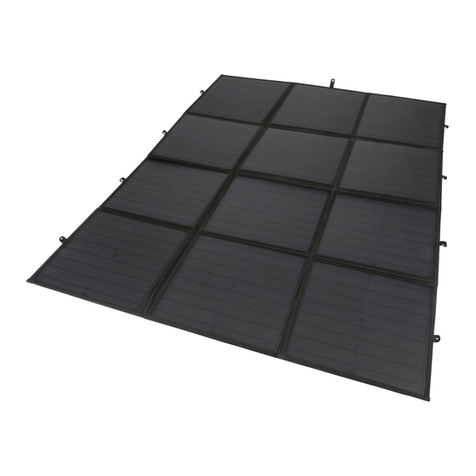
Page 10
C) Float Charging
After the Constant voltage stage, the controller will reduce charging to Float
Voltage setting, delivering a much smaller voltage and current. The main
purpose of the Float stage is to compensate for the power consumption caused
by self-discharge of the battery and any small (standby) loads in the power
system, while maintaining full battery storage capacity.
In Float charging stage, loads are able to obtain almost all power from solar
panel. If the load exceeds the solar power available, the controller will no longer
be able to maintain the battery at “Float” voltage, and some of the power will be
drawn from the battery. If the battery voltage drops below Recharge Voltage, the
system will leave Float charging stage and return to Bulk charging stage using
whatever solar power is available.
2. Installation Instructions
2.1 General Installation Notes
Before installation, please read through the entire installation instructions and
familiarize yourself with the installation steps.
• Take care when installing the batteries, especially flooded lead-acid batteries.
Wear eye protection, and have fresh water available in case of battery acid
leakage or spillage
• The controller comes pre-set for Gel, Sealed or Flooded batteries; other kinds
please refer to the battery manufacturer.
• Keep metal objects away from the battery terminals, which may cause short
circuit of the battery.
• The battery may emit explosive gases during charging, ensure sure ventilation
is adequate.
• Never install the controller in a fully sealed enclosure, in particular with flooded
cell batteries with removable filler caps! Battery fumes from vented batteries
will corrode and quickly destroy the controller circuits.
• Loose power connections and corroded wires may result in high temperatures
that can melt wire insulation, burn surrounding materials, or even cause fire.
Ensure all connections are tight and use cable clamps to secure cables and
prevent them from swaying in mobile applications.
• Battery connection may be wired to one battery or a bank of batteries. (The
following instructions refer to a single battery, but it is implied that the battery
connection can be made to either one battery or a group of batteries wired up
as a battery bank).
• Multiple MP3741 controllers can be installed in parallel on the same battery
bank to achieve higher charging current. However, each controller must have
its own separate solar module(s). You cannot run more than one MP3741
from the same solar array.
